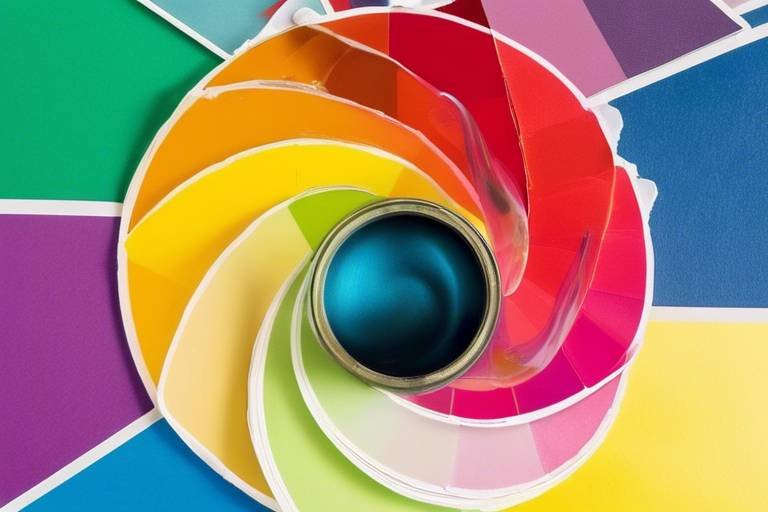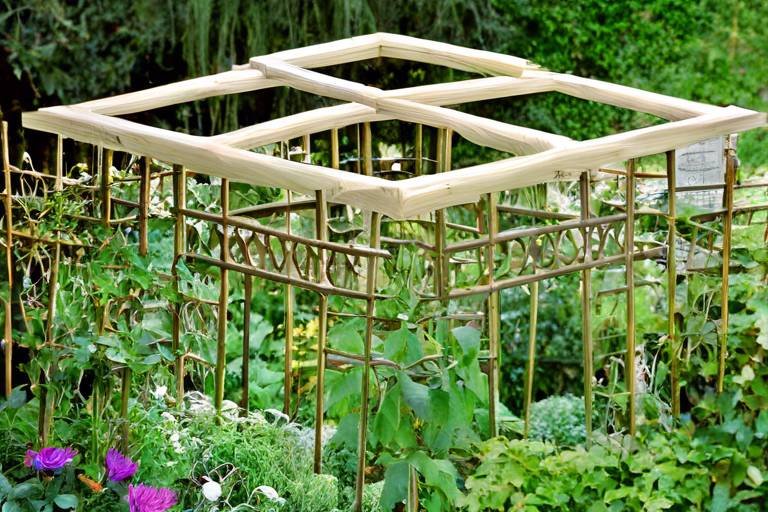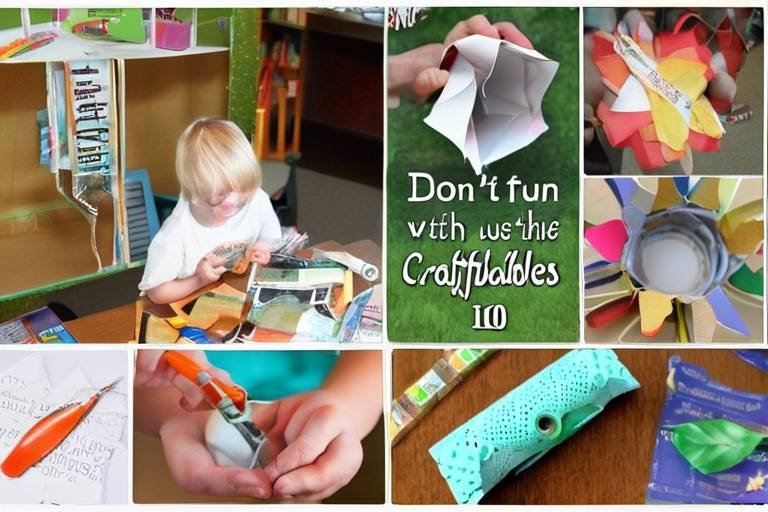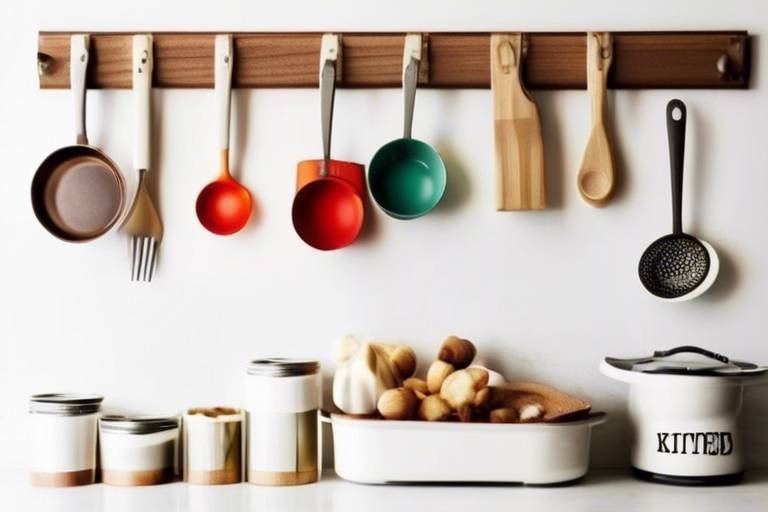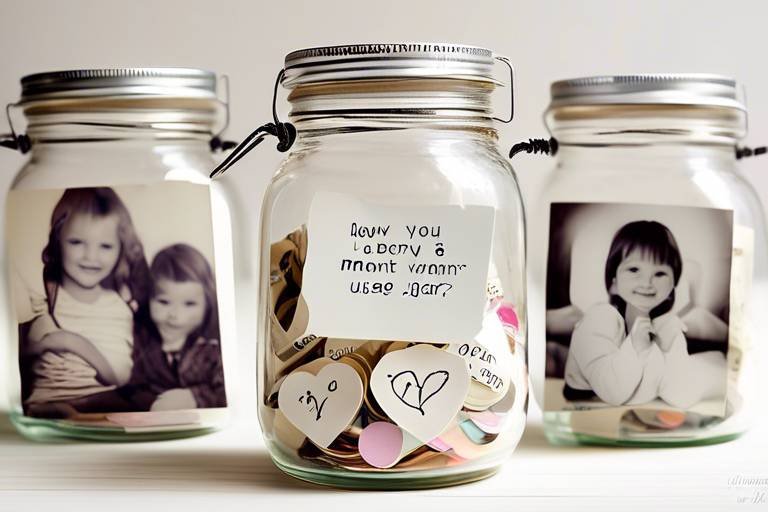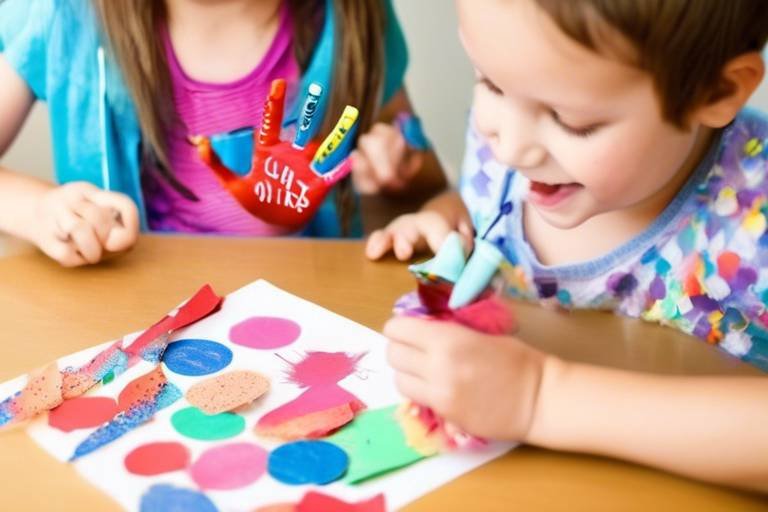How to Make Your Own Handmade Paper
Have you ever thought about creating your own unique handmade paper right at home? It's a surprisingly simple and rewarding process that allows you to transform old papers into beautiful new sheets of paper. Not only is it a fun and creative activity, but it's also an eco-friendly way to repurpose materials and reduce waste. So, let's dive into the step-by-step guide on how to make your very own handmade paper from recycled materials.
First things first, you'll need to gather all the necessary materials to kickstart your paper-making journey. Raid your recycling bin for old papers, grab a blender to create the pulp, find a basin to hold water, and don't forget a mold and deckle to shape your paper sheets. A sponge will also come in handy for the drying process, so make sure you have all these items ready before you begin.
Next up, it's time to prepare the pulp that will form the basis of your handmade paper. Start by shredding the old papers into small pieces, then soak them in water to soften. Once the paper is nice and mushy, use a blender to mix it into a pulp. This pulp will be the foundation of your handmade paper and can be customized further with colors or textures.
Feeling adventurous? Add a pop of color or a touch of texture to your paper by experimenting with natural dyes, flower petals, or even glitter. Get creative with your pulp mixture and let your imagination run wild as you create unique designs for your handmade paper.
Now comes the exciting part - creating the actual paper sheets! Dip the mold and deckle into the pulp mixture, making sure it's evenly spread out. Allow the excess water to drain off, then press the pulp to form thin sheets of paper. This process may take some practice, but don't worry, each sheet will be a work of art in itself.
Once you've formed your paper sheets, it's time to press and dry them. Use a cloth or felt to absorb any remaining water, then carefully stack the sheets and press them to remove excess moisture. Finally, lay the paper out to air-dry completely before moving on to the finishing touches.
To give your handmade paper a polished look, consider ironing the dried sheets between layers of cloth. This will flatten the paper and give it a smooth finish. Feel free to add any decorative elements at this stage to personalize your creations and make them truly one-of-a-kind.
Don't be afraid to experiment with different variations of handmade paper. Adjust the thickness of the pulp mixture, play around with colors and textures, and add unique elements to create a diverse range of handmade paper creations. The possibilities are endless, so let your creativity soar!
Once you've mastered the art of making handmade paper, it's time to put your creations to good use. Whether it's for crafts, cards, invitations, or art projects, your custom handmade paper will add a special touch to any project. Show off your creativity and eco-friendly approach by using your handmade paper in various ways and sharing your unique creations with others.

Gather Materials
When it comes to making your own handmade paper, the first step is to gather all the necessary materials. To embark on this creative journey, you will need a few key items to get started. Old papers, a blender, a basin, a mold and deckle, and a sponge are the fundamental materials required to initiate the paper-making process. These materials are essential for transforming recycled paper into unique handmade sheets that showcase your creativity.

Prepare the Pulp
When it comes to making your own handmade paper, the first crucial step is preparing the pulp. This process involves transforming your old papers into a pulp mixture that will serve as the foundation for your unique paper creations. By following a few simple steps, you can prepare the pulp effectively and efficiently.
To begin, gather all the old papers you wish to recycle and repurpose for your handmade paper project. These can include newspapers, magazines, or any other paper materials you have on hand. The more varied the papers, the more diverse your final paper creations can be.
Next, it's time to shred the papers into small pieces to facilitate the pulping process. Once shredded, soak the paper pieces in water for a period of time to soften them. This soaking process will make it easier to blend the paper into a smooth pulp mixture later on.
After the papers have soaked adequately, transfer them into a blender along with some water. Blend the mixture until it reaches a smooth consistency, ensuring that all paper pieces are broken down effectively. This blending process is essential for creating a uniform pulp mixture that will result in high-quality handmade paper.
If you want to add a creative touch to your handmade paper, consider experimenting with adding color or texture to the pulp mixture. Natural dyes, flower petals, or other materials can be incorporated to give your paper unique and personalized designs. This step allows you to unleash your creativity and produce one-of-a-kind paper creations.
Once you have prepared the pulp mixture to your satisfaction, you are ready to move on to the next steps in the paper-making process. The pulp you have created will form the basis for crafting your handmade paper sheets, each bearing the distinct characteristics of your creative input and personal style.

Add Color or Texture
When it comes to creating your own handmade paper, adding color or texture can elevate the uniqueness of your creations to a whole new level. By experimenting with different elements, you can infuse your paper with a touch of personality and flair that sets it apart from traditional paper products.
One way to add color to your handmade paper is by incorporating natural dyes derived from plants or vegetables. This not only gives your paper a vibrant hue but also introduces an eco-friendly aspect to your crafting process. Imagine the depth of color that beetroot or turmeric can impart to your paper, creating a visually stunning result.
Furthermore, consider integrating flower petals or other botanical materials into the pulp mixture. This not only adds a delicate texture to the paper but also infuses it with a subtle fragrance that enhances the sensory experience of using handmade paper. Picture the beauty of pressed flowers delicately adorning your paper, adding a touch of nature's elegance to your creations.
If you prefer a more artistic approach, you can experiment with embedding decorative elements like glitter, threads, or even small beads into the pulp. This allows you to customize your paper with unique textures and visual effects, turning each sheet into a work of art that reflects your creativity and individuality.
By adding color or texture to your handmade paper, you transform a simple craft into a captivating artistic endeavor. Whether you choose to play with natural dyes, botanical inclusions, or decorative embellishments, the possibilities are endless for creating truly one-of-a-kind paper that speaks to your creative vision.

Create the Sheets
Creating the sheets is a crucial step in the handmade paper-making process. Once you have prepared the pulp mixture, it's time to transform it into actual paper sheets. This step requires precision and patience to ensure the quality of your handmade paper.
First, dip the mold and deckle into the pulp mixture. The mold is a frame with a screen bottom, while the deckle is a frame without a screen that sits on top. This combination helps in shaping the paper and draining excess water.
Allow the water to drain from the pulp mixture, leaving behind a thin layer on the screen of the mold. Gently press the pulp to form a uniform sheet of paper. The thickness of the paper can be adjusted by controlling the amount of pulp used in this process.
After shaping the paper sheets, carefully lift the mold and deckle to reveal the freshly formed paper. It's important to handle the sheets delicately to avoid tearing or misshaping them. Repeat this process to create multiple sheets of handmade paper.
Once the sheets are formed, the next step is to press and dry them. Use a cloth or felt to absorb excess water from the paper sheets. Stack the sheets together and press them to remove any remaining moisture. This helps in achieving a smooth and even texture in the final product.
After pressing, the paper sheets need to be air-dried completely. Find a flat surface where you can lay out the sheets without overlapping. Allow them to dry naturally, ensuring proper ventilation to expedite the drying process. Avoid direct sunlight or heat sources that can damage the paper.
Creating handmade paper sheets is a rewarding process that allows you to customize the texture, color, and thickness of the paper according to your preferences. Each sheet embodies the effort and creativity put into its creation, making it a unique and personal medium for your artistic endeavors.

Press and Dry
After creating your handmade paper sheets, the next crucial step is to them properly. This process ensures that your paper is well-formed, smooth, and ready for use in various crafts and projects.
First, gently place a cloth or felt on top of the freshly formed paper sheets to absorb excess water. This step helps in speeding up the drying process and prevents the paper from becoming too damp.
Once excess water is absorbed, carefully stack the paper sheets on top of each other. By stacking them, you allow for even drying and ensure that each sheet retains its quality without warping or wrinkling.
Now, it's time to press the stacked sheets to remove any remaining moisture. You can use a heavy object or a dedicated paper press for this task. Applying gentle pressure helps in compacting the sheets and giving them a uniform texture.
For the final drying stage, place the pressed paper sheets in a well-ventilated area to air-dry naturally. Avoid exposing them to direct sunlight or high heat, as this can cause the paper to yellow or become brittle.
As an optional step, you can further enhance the quality of your handmade paper by ironing it between sheets of cloth. This process helps in flattening the paper and giving it a professional finish.
Once your handmade paper is completely dry and flattened, feel free to add decorative touches if desired. You can embellish the paper with stamps, embossing, or even hand-painted designs to personalize your creations.

Ironing and Finishing
After your handmade paper sheets have air-dried, the final steps involve ironing and adding finishing touches to enhance the appearance and quality of the paper. When ironing, place a sheet of cloth over the dried paper and use a warm iron to gently press and flatten the sheets. This process helps remove any remaining wrinkles or unevenness, resulting in smooth and professional-looking handmade paper.

Experiment with Variations
When it comes to creating your own handmade paper, the possibilities for experimentation and customization are endless. By varying the thickness, color, and texture of your paper, you can truly make each piece unique and tailored to your preferences. Adjusting the pulp mixture and incorporating different elements into the paper-making process allows you to explore a wide range of variations in your handmade paper creations.
Imagine the excitement of trying out various combinations of materials to achieve different effects on your paper. Just like an artist mixing colors on a palette to create a masterpiece, you can mix and match different components to produce stunning and one-of-a-kind handmade paper. Whether you prefer a subtle pastel hue, a vibrant splash of color, or a textured finish, experimenting with variations in your paper-making process can lead to surprising and delightful results.
One way to explore variations in your handmade paper is by incorporating natural elements such as flower petals, leaves, or even glitter into the pulp mixture. These additions not only add visual interest but also create a sensory experience when using the finished paper. Imagine the joy of receiving a handmade card adorned with delicate pressed flowers or the whimsy of a piece of paper embedded with shimmering specks of glitter.
Furthermore, adjusting the thickness of your paper can significantly impact its appearance and functionality. From thin, delicate sheets suitable for intricate papercraft to thicker, sturdier paper ideal for greeting cards or invitations, the choice is yours. By experimenting with different pulp consistencies and pressing techniques, you can create a diverse range of paper thicknesses to suit various purposes.
Consider creating a table to document your experiments with variations in handmade paper. List the different materials used, the techniques applied, and the outcomes observed. This visual representation can help you track your progress, identify successful combinations, and inspire future creative endeavors. Remember, the beauty of handmade paper lies in its imperfections and unique characteristics, so embrace the journey of experimentation and discovery.

Use Your Handmade Paper
So, you've successfully created your own unique handmade paper from recycled materials at home. Now, it's time to put your beautiful creations to good use. Using your handmade paper opens up a world of possibilities for showcasing your creativity and environmentally friendly approach.
One fantastic way to use your handmade paper is for various crafts and DIY projects. Whether you enjoy scrapbooking, journaling, or creating handmade gifts, your custom paper adds a special touch to any project. The unique texture and appearance of handmade paper can elevate your creations to a whole new level.
Another great way to utilize your handmade paper is for making personalized cards and invitations. Impress your friends and family with one-of-a-kind cards for special occasions like birthdays, weddings, or holidays. The recipients will surely appreciate the effort and thoughtfulness that went into creating such unique stationery.
For art enthusiasts, handmade paper provides an excellent canvas for artistic expression. Use your paper as a base for painting, drawing, or printmaking. The natural fibers and irregularities in handmade paper can add depth and character to your artworks, making them truly stand out.
If you're feeling extra creative, consider incorporating your handmade paper into home décor projects. From framing pieces of handmade paper as wall art to using it for decorative accents like lampshades or gift wrap, the possibilities are endless. Your handmade paper creations can add a personal and artistic touch to your living space.
Remember, the beauty of handmade paper lies in its versatility and uniqueness. Experiment with different techniques, such as layering, tearing, or embossing, to create truly original pieces. Whether you're a seasoned crafter or just starting out, using your handmade paper allows you to explore your creativity in exciting new ways.
Frequently Asked Questions
- Can I use any type of paper for making handmade paper?
Yes, you can use a variety of paper materials such as newspaper, scrap paper, or even old greeting cards to create unique handmade paper.
- Do I need any special equipment to make handmade paper?
Basic equipment like a blender, basin, mold and deckle, and a sponge are essential for the paper-making process. However, you can also get creative with tools you have at home.
- Is it necessary to add color or texture to the paper pulp?
No, adding color or texture to the pulp is optional. It's a fun way to experiment and personalize your handmade paper, but plain white paper can also look elegant and beautiful.
- How long does it take for the handmade paper to dry?
The drying time can vary depending on the thickness of the paper and environmental conditions. Typically, it may take a day or two for the paper sheets to completely dry.
- Can I write or print on handmade paper?
Absolutely! Handmade paper is versatile and can be used for writing, drawing, printing, or any other creative projects you have in mind.


